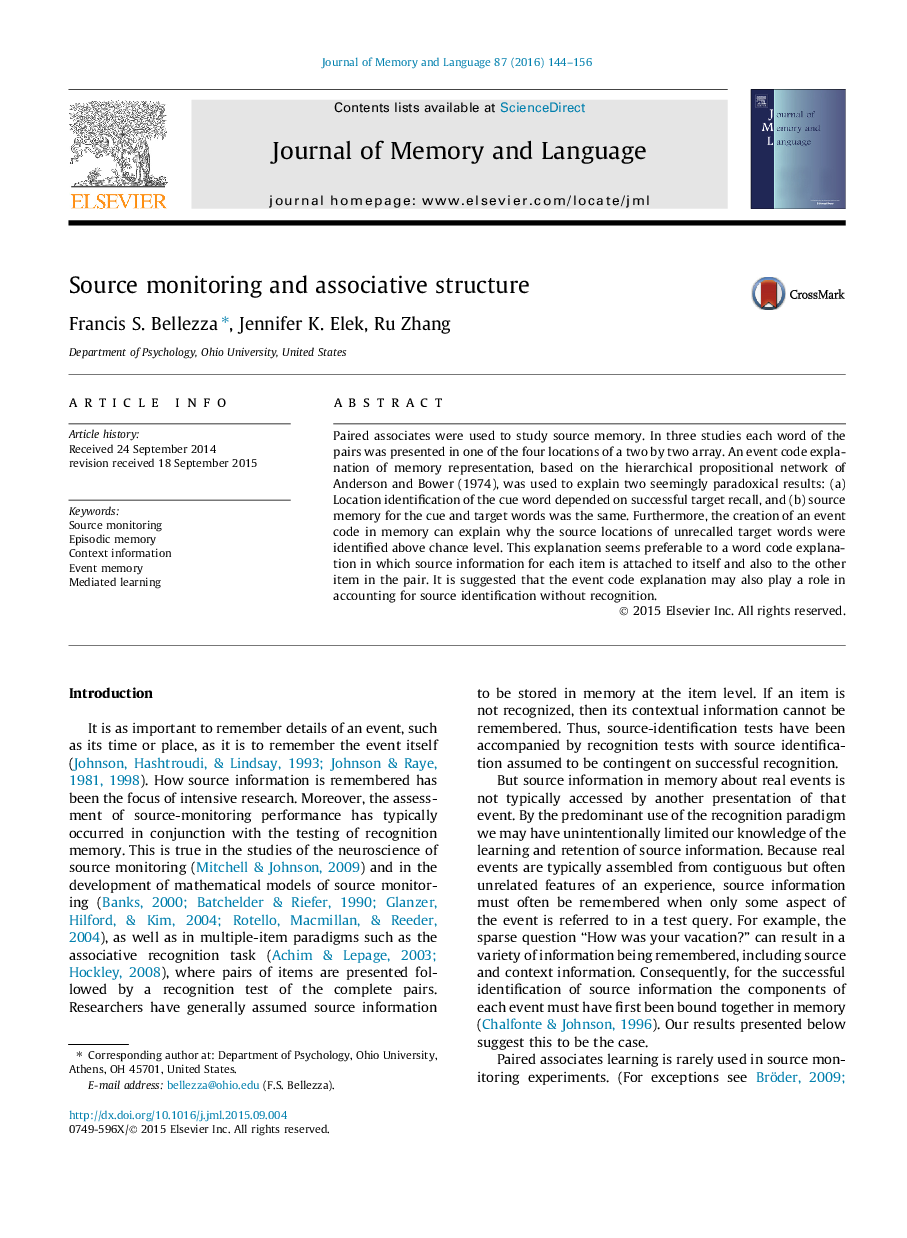| Article ID | Journal | Published Year | Pages | File Type |
|---|---|---|---|---|
| 7296983 | Journal of Memory and Language | 2016 | 13 Pages |
Abstract
Paired associates were used to study source memory. In three studies each word of the pairs was presented in one of the four locations of a two by two array. An event code explanation of memory representation, based on the hierarchical propositional network of Anderson and Bower (1974), was used to explain two seemingly paradoxical results: (a) Location identification of the cue word depended on successful target recall, and (b) source memory for the cue and target words was the same. Furthermore, the creation of an event code in memory can explain why the source locations of unrecalled target words were identified above chance level. This explanation seems preferable to a word code explanation in which source information for each item is attached to itself and also to the other item in the pair. It is suggested that the event code explanation may also play a role in accounting for source identification without recognition.
Related Topics
Life Sciences
Neuroscience
Cognitive Neuroscience
Authors
Francis S. Bellezza, Jennifer K. Elek, Ru Zhang,
